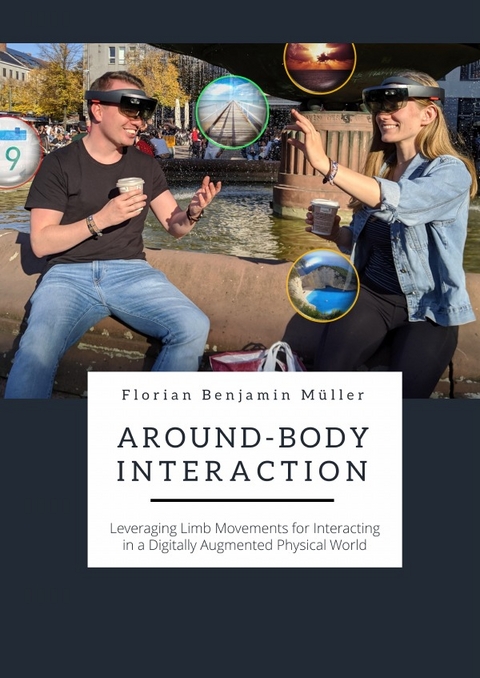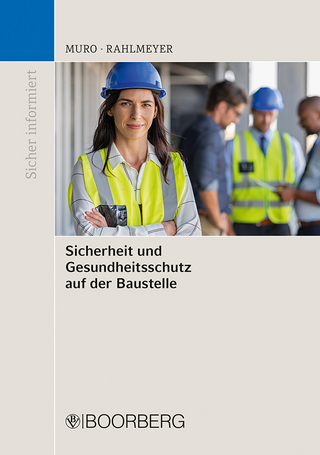
Around-Body Interaction
Leveraging Limb Movements for Interacting in a Digitally Augmented Physical World
Seiten
2020
epubli (Verlag)
978-3-7502-7761-8 (ISBN)
epubli (Verlag)
978-3-7502-7761-8 (ISBN)
- Titel leider nicht mehr lieferbar
- Artikel merken
This book explores how the skills and dexterity of our upper and lower limbs, acquired and trained in interacting with the real world, can be transferred to the interaction with HMDs.
Recent technological advances have made head-mounted displays (HMDs) smaller and untethered, fostering the vision of ubiquitous interaction with information in a digitally augmented physical world. For interacting with such devices, three main types of input - besides not very intuitive finger gestures - have emerged so far: 1) Touch input on the frame of the devices or 2) on accessories (controller) as well as 3) voice input. While these techniques have both advantages and disadvantages depending on the current situation of the user, they largely ignore the skills and dexterity that we show when interacting with the real world: Throughout our lives, we have trained extensively to use our limbs to interact with and manipulate the physical world around us.
This thesis explores how the skills and dexterity of our upper and lower limbs, acquired and trained in interacting with the real world, can be transferred to the interaction with HMDs. Thereby, this thesis develops the vision of around-body interaction, in which we use the space around our body, defined by the reach of our limbs, for fast, accurate, and enjoyable interaction with information.
Recent technological advances have made head-mounted displays (HMDs) smaller and untethered, fostering the vision of ubiquitous interaction with information in a digitally augmented physical world. For interacting with such devices, three main types of input - besides not very intuitive finger gestures - have emerged so far: 1) Touch input on the frame of the devices or 2) on accessories (controller) as well as 3) voice input. While these techniques have both advantages and disadvantages depending on the current situation of the user, they largely ignore the skills and dexterity that we show when interacting with the real world: Throughout our lives, we have trained extensively to use our limbs to interact with and manipulate the physical world around us.
This thesis explores how the skills and dexterity of our upper and lower limbs, acquired and trained in interacting with the real world, can be transferred to the interaction with HMDs. Thereby, this thesis develops the vision of around-body interaction, in which we use the space around our body, defined by the reach of our limbs, for fast, accurate, and enjoyable interaction with information.
Florian Müller ist ein Forscher im Bereich der Human-Computer Interaction. Seine Forschungsinteressen liegen im Bereich Augmented Reality, Virtual Reality und körperbasierter Kozepte zur Interaktion in und mit der physischen Welt. Er hat an der Technischen Universität Darmstadt am Telecooperation Lab unter Leitung von Max Mühlhäuser in diesen Bereichen promoviert und arbeitet dort aktuell als Wissenschaftlicher Mitarbeiter.
| Erscheinungsdatum | 04.02.2020 |
|---|---|
| Sprache | englisch |
| Maße | 170 x 240 mm |
| Gewicht | 554 g |
| Themenwelt | Sachbuch/Ratgeber ► Natur / Technik ► Technik |
| Technik ► Nachrichtentechnik | |
| Schlagworte | AR • augmented reality • head-mounted displays • HMD • interaction |
| ISBN-10 | 3-7502-7761-3 / 3750277613 |
| ISBN-13 | 978-3-7502-7761-8 / 9783750277618 |
| Zustand | Neuware |
| Haben Sie eine Frage zum Produkt? |
Mehr entdecken
aus dem Bereich
aus dem Bereich
die wichtigsten Begriffe, Bautypen und Bauelemente
Buch | Softcover (2024)
Prestel (Verlag)
CHF 44,75
vom Kolosseum über die Akropolis bis zur Alhambra
Buch | Hardcover (2023)
DK (Verlag)
CHF 29,90


